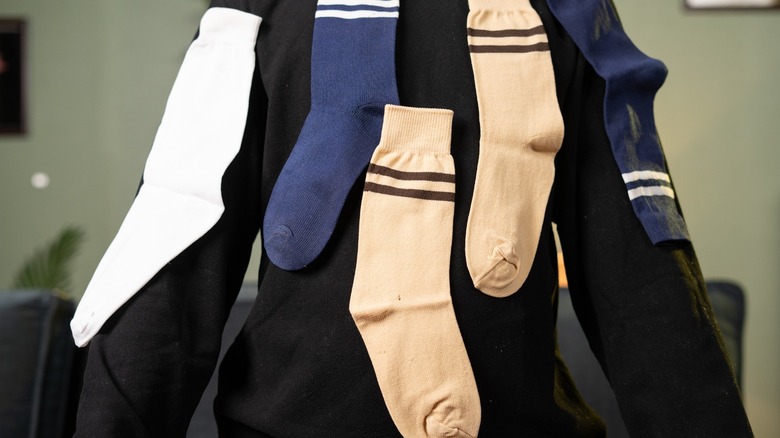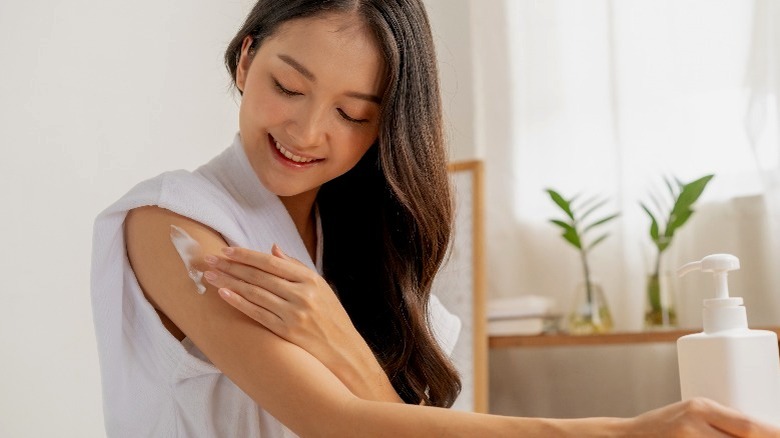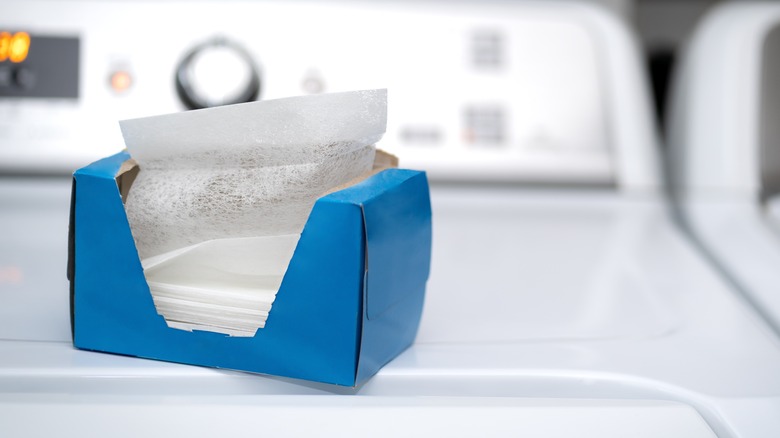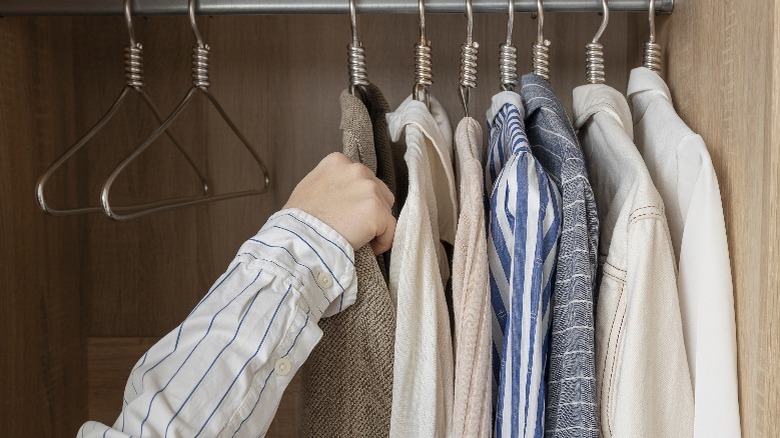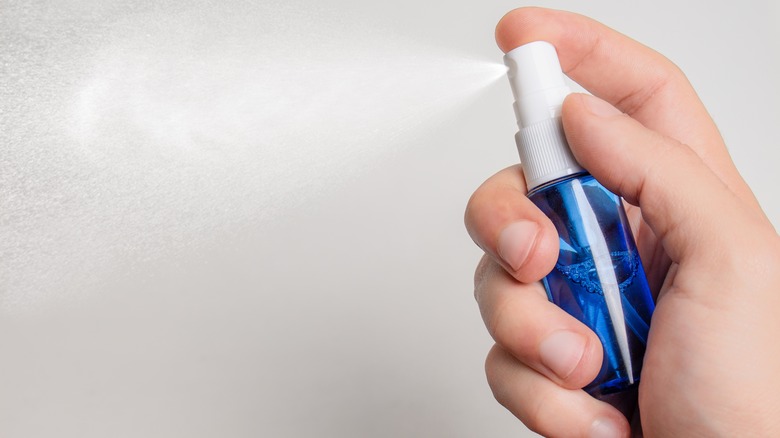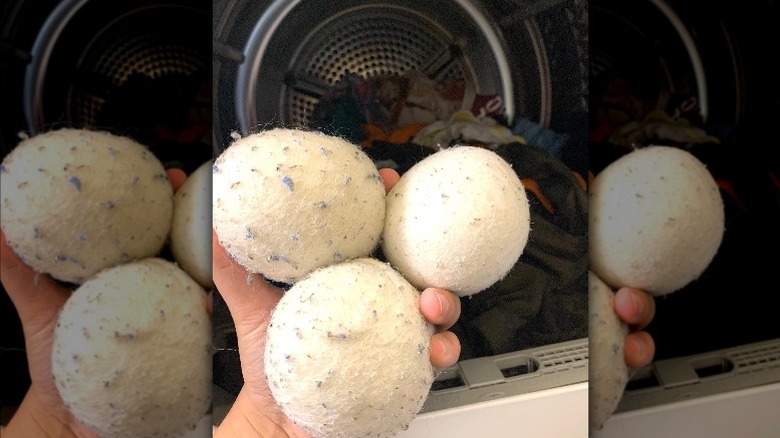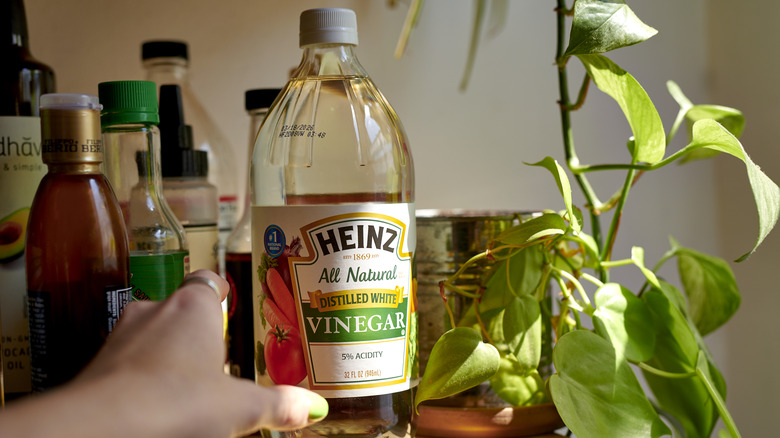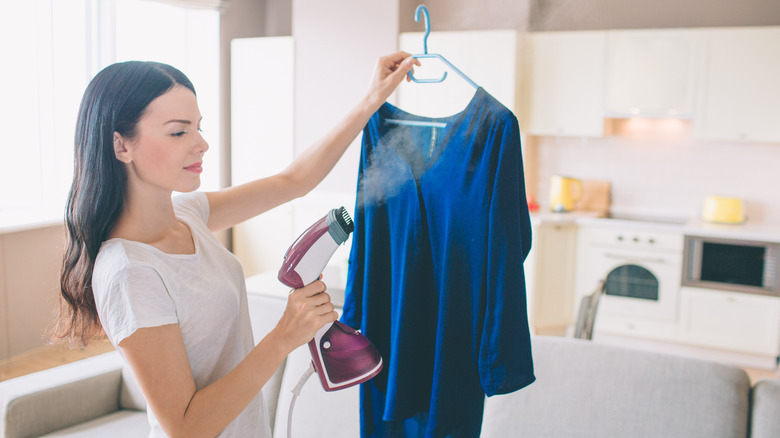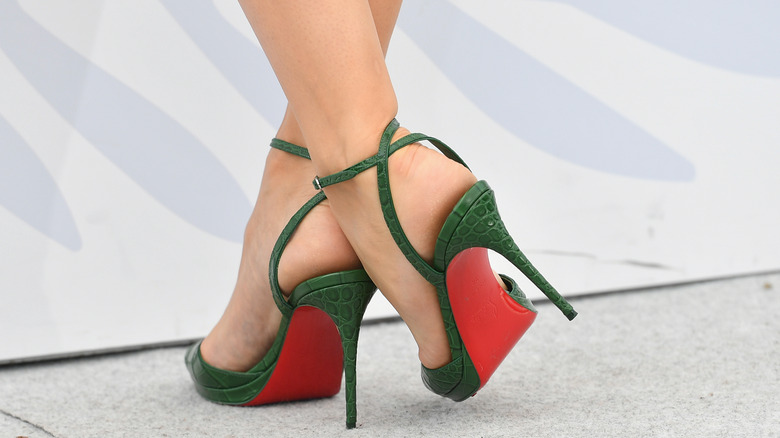How To Combat Static Cling No Matter What You Wear
Static cling is a pesky nuisance that prevents your clothing from laying flat, sparks static electricity shocks as you shift around in a clingy kit, or accompanies you to important presentations where its clinging presence is the least invited of guests. Regardless of your chosen fabric, garments, or mixed ensemble, effective and proven methods for eliminating static cling from clothing abound.
Most static cling-reducing efforts can be conducted by utilizing items you have at home, which you can call into action when you're time-crunched to get out the door. But suppose you can't get your satin pants to cooperate or have a child bothered by static electricity shocks from their clothing and other items. In that case, you can rest assured that a quick static-eliminating solution is quickly taking action to give everyone a smoother morning.
This scientific phenomenon occurs when charged electrons transfer from one surface to another, or in the case of clothing, the electrons transfer from one fold of your dress onto another and don't seem to stop bouncing about. Neutralizing the energy charges within the hyperactive, jumping electrons, plus accompanying protons, can calm the energy field on your clothing and allow your garments to stay in place while remaining static and cling-free throughout your day. Whether cotton pants, satin blouses, silk dresses, wool hats, or polyester athletic attire, ways to neutralize hyperactive static electricity are constantly nearby.
Maintain your skin's moisturization
Static electricity and its byproduct of static cling thrive in environments of low humidity, frequently said to be most energetically active when moisture levels are below 40%. Without having to do a single thing to adjust your clothing items experiencing static cling, one of the best methods for mitigating static cling proactively while also reaping numerous wellness benefits for physical and mental health is to apply generous amounts of lotion and moisturizer to your body daily.
Maintaining moisturized skin will accumulate natural humidity levels from head to toe, effectively warding off static cling. As the skin is regularly moisturized, the hydration in your skin's moisture barrier builds up. It ultimately accumulates past the threshold that static cling requires to springboard its energy, so freshly moisturized skin is guaranteed to repel static cling.
Furthermore, keep a bottle of lotion or tube of moisturizer at your desk for times when you may find your pants, shirt, or dress clinging to your chair or other fabrics within your ensemble. Particularly when donning delicate fabrics like satin and silk dresses, which are prone to absorbing static electricity and clinging in awkward fashions, lathering your skin with lotion a few minutes before getting dressed can keep static cling away an entire day. For added security, plop a travel tube of lotion into your bag.
Dryer sheets are always dependable
One of the most dependable items for definitively defeating static cling on clothing, upholstery, and even on your hair is the determined dryer sheet. Always ready to come to your rescue, dryer sheets are an exceptionally cost-effective measure and practically the poster image of static cling-reducing superheroes designed to soften fabric and reduce static on materials. In the dryer, you can run a dryer sheet along your clothing and indulge in the rapid reduction of static electricity and cessation of cling, which occurs practically instantaneously. Dryer sheets pull double duty while applying their neutralizing skills. Rubbing dryer sheets across clothing with deodorant stains can pull the deodorant and antiperspirant products out of finely interwoven fabric.
Another DIY method of eliminating static cling is using a single dryer sheet and rubbing it across your attire from top to bottom. Additional benefits of rubbing dryer sheets across fabric include the collection of unwanted material from your apparel. This means that while you're effectively fighting off static cling on your garments, you get to soak in the extra assurance that lingering pet hair, dust from allowing the garment to sit in your closet for a tad too long, and any microscopic dirt or dander elements are being picked off the fabric.
Organizational items are particularly helpful
When neither dryer sheets nor lotion is available for use, and you're in a rush to get out the door, one DIY hack to guarantee the neutralization of hyperactive electrons is to grab a spare hanger from your closet to rid static cling from your attire. Specifically, metal hangers are the secret to pulling static cling from clothing and neutralizing electrons that are having a hay day jumping from your shirt to your pants and back again or from one fold of your silk kit to another. Just as dryer sheets are rubbed across garments, going from top to bottom and side to side to cover every stitch of fabric to eliminate static cling, the same premise applies. Use a metal coat hanger to absorb overactive static electricity and reduce the electrons remaining in your attire.
As you rub a metal hanger across your clothing, be mindful of your technique since metal hangers are made from different materials than their static cling-banishing counterparts. Given metal's naturally sharp composition, coupled with the craftsmanship of metal hangers which tend to leave variably sharp edges closer to the hanger's hook, you'll want to ensure you're only brushing the flat bottom of metal hangers against clothing to avoid snagging fabric in the process of catching static cling. Pay attention to satin, silk, lace, and linens, as eliminating static electricity is best enjoyed when your clothing remains intact.
Use spray specifically for reducing static
Garment sprays are formulated for eradicating and eliminating static cling from clothing. The inclusion of hygroscopic elements makes these uniquely concocted solutions successful in erasing static cling. These substances attract humidity and push hyperactive electrons and charged static electricity off of the fabric that's been sprayed. As moisture and humidity collect on targeted material, static electricity can no longer thrive. Effectively, within moments of spraying, electrons and electrostatic cling-inducing charges are defeated, and the fabric is cling-free.
Keep in mind, though, that even though the material may have had electrostatic charges neutralized in the morning, you may want to keep a bottle of static cling-reducing spray with you throughout the day for additional support as needed. This depends on the weather outside and the levels of humidity both on your skin — perhaps from regular moisturizing — and in buildings and atmospheres in which you're exposed throughout your daily routine,
There are static cling-eliminating solutions from name brands such as Downy and Bounce, along with other major laundry product labels, which have been user-approved for their effectiveness in keeping static cling away at all times of the year, even during winter months when humidity is at its lowest. There are also DIY methods available for those who are feeling particularly resourceful, comprising 1 cup of water and 2 tablespoons of liquid fabric softener.
Laundry lends opportunities for resourceful fun
Laundry may be never-ending in your household, but it can eliminate static cling while clothing is being wrung of moisture in the dryer. Through methods founded in environmentally sustainable resources and mindful practices, wool and felt dryer balls are your answer to static cling-reducing means that minimize carbon footprint.
These multi-use dryer balls can be purchased from brands or independent artisans or made through DIY techniques with supplies from your local crafts store. Bundling up wool or felt can make for a family-friendly and fun activity since kids can take part in crafting their sustainable dryer balls by bunching up wool and adding dryer-safe embellishments. Older kids can try needle-pointing designs on dryer balls with adult supervision. Who knew it could ever be so creative and fun to fight aggravating static cling?
Wool and spruce dryer balls are extremely similar in function to disposable, single-use dryer sheets, except that the dryer balls are sustainable and can be used over numerous loads of laundry to replace static cling-absorbing dryer sheets. They also provide the benefits of softening fabrics, lessening yet another laundry essential from single-use inefficiency. Better yet, you can rub wool or felt dryer balls across apparel just as you would dryer sheets to absorb static electricity from individual garments.
Vinegar vehemently vanishes static
Another household hack for achieving a static cling-free closet is to utilize a basic product you most likely have lingering somewhere in your kitchen, laundry area, or amongst household cleaning products. The magic item in question is distilled vinegar, which can be used in multiple ways to remove static cling from even the most delicate fabrics, including satin and silk. When you have a delicate garment, whether a dress, skirt, pants, or intimate lingerie set, made of lace, silk, or similarly fragile materials, you're unlikely to want to use a metal hanger to rid the delicate outfit of static cling. In the same vein, you won't stick an item labeled as being solely eligible for air drying into the dryer along with wool or felt dryer balls.
Instead, you'll need a curated and proven approach for eliminating static electricity from fragile fabrics before attempting any method on your favorite silk slip dress or lace bra. Hand washing garments in cool water with a small amount of distilled vinegar can eliminate static cling from fragile fabrics. The good news is that garments washed in distilled vinegar soaks won't smell like its well-known pungent scent once completely dried. Trust the process; you'll be void of static cling and vinegar's vicious smell with this DIY household hack!
Steam can eliminate static cling
Even more basic than household products like vinegar, metal hangers, and dryer sheets is the most primitive of elements aside from oxygen — water. It not only wards off static electricity but also depletes electron activity amongst your clothing and smooths fabrics. Water and its shape-shifting elemental form of steam can effectively minimize static electricity. It utilizes techniques as simple as dabbing fabric with a damp cloth containing only a little water to create enough humidity on garments to send static cling packing.
Additionally, water can increase humidity in dry climates and maintain appropriate amounts of moisture to ward off static electricity on the clothes within your closet by setting up a dehumidifier where you store your attire. For use on individual clothing items, handheld steamers and devices designed for travel are efficient and productive routes for pulling the double feat of defeating static cling and wrinkles. You can create DIY misting mechanisms by filling clean spray bottles with distilled water, then gently misting clothing to add moisture and eliminate static cling.
Hairspray and leather shoes
Like other static cling-reducing methods, searching your home for thrifty ways of eliminating static cling on your clothing can be surprising. When in a bind, TikTok user @christiemoeller shares the tip of using hairspray instead of water mist, a fabric steamer, or static cling-specific reducing spray. However, hairspray should never be applied to delicate fabrics. Its ingredients contain chemicals that can stain, discolor, damage, or even bleach more fragile materials.
For an approach to stamping out static cling, which may not be obvious, donning shoes with leather soles can be an effective measure for annihilating static cling from the ground up — literally! Leather is luminously fantastic in preventing static electro-charged activity and electricity accumulation from moving through the body as you move around. In contrast, other materials used for manufacturing the soles of shoes don't provide the same static cling-fighting benefits. If you're constantly plagued by static cling, take this as your sign to invest in a thoroughly crafted pair of leather-soled shoes, perhaps splurging for the iconic red soles of Louboutin heels. P.S. Don't forget to moisturize!
